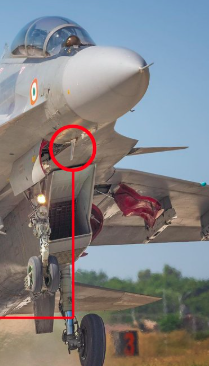SOURCE: AFI


In the aftermath of the 2019 Balakot airstrike and the subsequent Operation Swift Retort, the Indian Air Force (IAF) faced a harsh reality: its communication and data-sharing systems were vulnerable, as exposed by the downing of a MiG-21 and a friendly-fire incident involving an Mi-17 helicopter. Rather than resting on the laurels of its audacious strike, the IAF embarked on a quiet but transformative upgrade spree, integrating advanced Software-Defined Radios (SDRs) across its fleet and network infrastructure.
By April 2025, multi-band, crypto-agile, and Tactical Data Link (TDL)-capable SDRs have been seamlessly integrated into platforms like the Su-30MKI, Mirage-2000I, LCA Tejas, MiG-29, Rafale, Netra AEW&C, AWACS, and AFNet nodes, including Surface-to-Air Missile (SAM) systems and radars. This homogeneous, jam-resistant, over-the-air (OTA)-updatable ecosystem has redefined India’s network-centric warfare capabilities, leaving conspiracy theorists and adversaries scrambling to keep up.
The Balakot operation on February 26, 2019, saw IAF Mirage 2000 jets strike a Jaish-e-Mohammed (JeM) camp in Pakistan, showcasing precision and audacity. However, the Pakistani Air Force’s (PAF) retaliation during Operation Swift Retort exposed critical gaps in IAF’s communication architecture. The PAF’s use of F-16s with AMRAAM missiles and Link-16 data links outmaneuvered India’s outdated radio systems, leading to Wing Commander Abhinandan Varthaman’s MiG-21 being shot down. Compounding the crisis, an IAF Mi-17 was downed by a friendly Spyder SAM due to misidentification, revealing flaws in the IAF’s Identification Friend or Foe (IFF) and network integration.
Theorists had long argued that retrofitting diverse platforms—Russian, French, Israeli, and indigenous—with a unified, secure communication system was near impossible due to interoperability challenges and legacy hardware constraints. The IAF, however, took these setbacks as a catalyst, launching a phased SDR upgrade program that has quietly revolutionized its operational capabilities.
Software-Defined Radios, which use software to modulate and demodulate radio signals, offer unparalleled flexibility compared to traditional hardware-based systems. The IAF’s post-Balakot initiative focused on deploying multi-band, crypto-agile, and TDL-capable SDRs across its air, ground, and network assets, creating a cohesive, secure, and resilient communication ecosystem. Key platforms upgraded include:
- Combat Aircraft: The Su-30MKI (250+ units), Mirage-2000I (50 units), LCA Tejas (40+ Mk-1, Mk-1A in production), MiG-29UPG (60 units), and Rafale (36 units) now feature SDRs like the BNET-AR (Airborne Radio) from Rafael Advanced Defense Systems, supplemented by indigenous systems from Bharat Electronics Limited (BEL). These SDRs support multi-band operations (VHF, UHF, L-band) and integrate with NATO-standard Link-16 and India’s Vayulink TDL protocols.
- AEW&C and AWACS: The Netra AEW&C (2 units, 1 in production) and IL-76-based AWACS (3 units) have been upgraded with BNET-Ground and SDR-HH (Handheld) variants, enabling real-time data fusion with fighters, SAMs, and AFNet nodes.
- Ground Systems: AFNet, India’s secure fiber-optic network, now integrates SDR-enabled nodes on SAM systems (S-400, MR-SAM, Akash) and radars (Arudhra, Ashwini, Rohini). These nodes ensure seamless data exchange, enhancing situational awareness and targeting accuracy.
- Indigenous Innovations: The DRDO’s Vayulink system, a secure TDL, complements BNET, providing encrypted voice, data, and video transmission. BEL’s Combat Management System (CMS) integrates SDRs across platforms, ensuring compatibility with legacy systems like the MiG-29’s Russian radios.
The IAF’s SDRs are crypto-agile, allowing rapid key changes to counter jamming, and OTA-updatable, enabling real-time software patches without grounding aircraft. This homogeneity ensures that all platforms “hum in sync,” sharing a common protocol stack that eliminates the interoperability issues that plagued Balakot.
Looking ahead, the IAF plans to extend SDRs to helicopters (ALH Dhruv, Apache) and UAVs (Tapas, Ghatak), with HAL targeting 100% indigenous SDRs by 2030. Integration with India’s Integrated Air Command and Control System ( ???? IACCS) will further enhance automation, reducing response times against threats.
NOTE: AFI is a proud outsourced content creator partner of IDRW.ORG. All content created by AFI is the sole property of AFI and is protected by copyright. AFI takes copyright infringement seriously and will pursue all legal options available to protect its content.